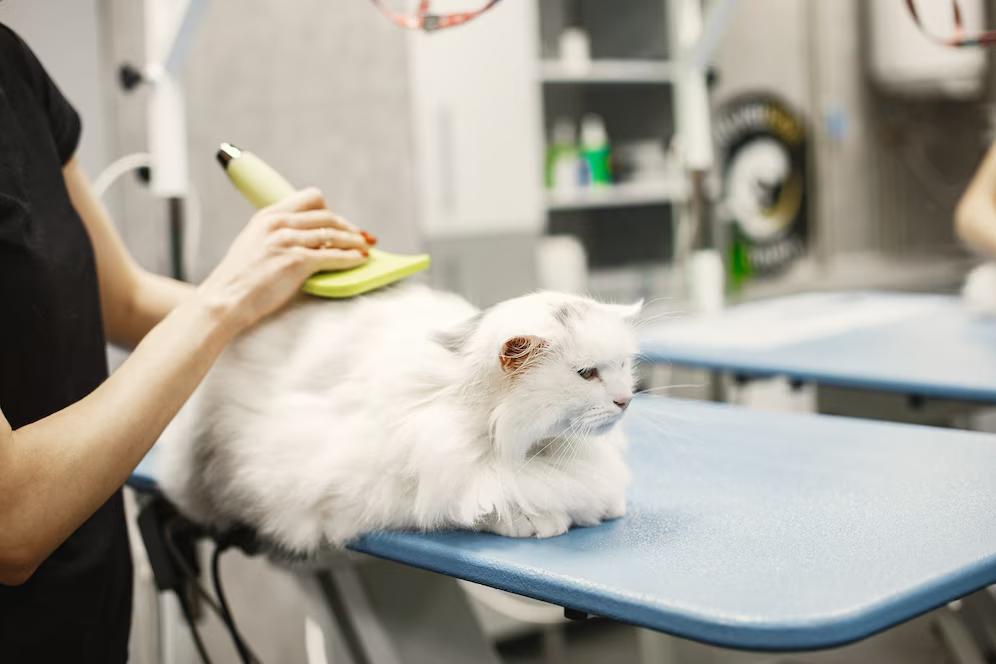
Exclusions to Watch for in Pet Insurance Policies
You’ve done your homework. You’ve chosen a pet insurance plan that suits your budget. Now, you can breathe easier knowing your furry friend is covered. But then an unexpected illness strikes, and your claim is rejected. The reason? A clause buried deep in the policy’s fine print.
Sound familiar?
A key part of pet insurance policies is often ignored: the exclusions list. These are the treatments, conditions, and situations your policy won’t cover. If you don’t understand them, you might face an unpleasant surprise.
In this guide, we’ll cover common pet insurance exclusions. We’ll explain why they exist and how to spot them. You’ll be better prepared to read pet insurance details, ask key questions, and pick coverage that really protects your pet.
Let’s pull back the curtain on those pesky exclusions and ensure you’re never caught off guard.
Why Exclusions Matter More Than You Think
It’s easy to get caught up in shiny policy features like “£10,000 annual cover” or “lifetime protection”. But these don’t matter much if your policy secretly leaves out the most common or expensive conditions.
Understanding uncovered pet conditions can:
- Help you avoid claim rejections
- Save you from unexpected vet bills
- Prevent frustration when your pet really needs care
- Allow you to compare insurers accurately
In short, reading the small print could make or break your experience when it matters most.
Common Pet Insurance Exclusions You Should Know
Every provider is different, but most policies share a few standard exclusions. Let’s examine the most common ones.
1. Pre-Existing Conditions
This is the big one.
A pre-existing condition is any illness, injury, or symptom you had before your policy began. This applies even if it wasn’t officially diagnosed.
Examples:
- A limp you noticed months ago but never treated
- Recurring ear infections
- Diagnosed allergies, even if symptom-free now
Most insurers will not cover these. They may exclude them permanently or for a set time, usually 12 to 24 months, without symptoms.
Tip: Some providers, like ManyPets, offer partial coverage for pre-existing conditions. This is available if your pet hasn’t shown symptoms for some time. Always ask before assuming.
2. Routine and Preventive Care

Standard insurance won’t cover routine treatments unless you have a wellness plan. These include:
- Vaccinations
- Worming and flea treatments
- Nail trims
- Annual health checks
- Routine dental cleanings
These are considered the owner’s responsibility and fall outside emergency or illness coverage.
Tip: Some insurers include routine care in premium plans. This can help you have predictable costs.
3. Dental Treatment
Here’s a tricky one. Dental care is often excluded, or only covered in very specific circumstances.
Typically excluded:
- Teeth cleaning
- Routine dental work
- Cosmetic dental procedures
May be included:
- Dental treatment due to an accident (e.g. broken tooth from trauma)
- Dental illness (like gum disease) — only if the policy includes this AND you can prove regular check-ups
Attention: Some insurers need proof of yearly dental exams to accept your claims.
4. Elective and Cosmetic Procedures

Pet insurance is for health issues, not cosmetic touch-ups.
Common exclusions:
- Tail docking
- Ear cropping
- Dew claw removal (unless medically necessary)
- Neutering/spaying (in most cases)
- Teeth whitening or cleaning for appearance
Even if you believe it’s for the pet’s comfort or hygiene, if it’s considered cosmetic, it won’t be covered.
5. Pregnancy and Breeding
Breeding animals face different risks. That’s why most standard policies don’t cover pregnancy-related care.
Typically not covered:
- Mating and fertility treatment
- Complications during pregnancy
- Caesarean sections
- Care for newborns
If you breed your pet, find a specialist breeder, insurance or a custom plan that covers this.
6. Behavioural Issues (Unless Referred)
Some insurers exclude all behavioural conditions. Others cover them only if a vet diagnoses and refers them.
Could include:
- Aggression
- Anxiety or separation anxiety
- Obsessive behaviours
- House-soiling issues
Important: Coverage might only apply to treatment from a certified animal behaviourist, and it often requires prior approval from your vet.
7. Alternative or Complementary Therapies
Acupuncture, hydrotherapy, and physiotherapy can greatly benefit pets, but not all insurers see it that way.
These treatments may only be covered if:
- Prescribed by a vet
- Part of the recovery from an accident or surgery
- Performed by a licensed professional
And even then, session limits or annual caps often apply.
Look for: Policies that clearly outline what’s included under complementary therapies.
8. Old-Age Limitations

As pets age, their healthcare needs increase — but so do insurance limitations.
Many policies:
- Require higher copayments once your pet reaches age 8 or 10
- Exclude certain treatments (e.g. joint support, mobility therapy)
- Raise premiums significantly
- Stop new coverage altogether (some won’t insure pets over a certain age)
Solution: Insure early, and stick with the same provider to maintain continuity.
9. Conditions Related to Breed
Some insurers do not cover hereditary or breed-specific conditions. This is common in breeds with known issues.
Examples:
- Hip dysplasia in Labradors
- Respiratory problems in Bulldogs
- Eye disorders in Pugs
- Spinal issues in Dachshunds
Check your provider’s breed-specific exclusions list. It’s often hidden in the fine print.
10. Negligence or Owner Error
No policy covers preventable incidents caused by poor care.
Not covered:
- Failure to vaccinate, leading to illness
- Injury due to a lack of supervision
- Poisoning from leaving harmful substances accessible
- Conditions from poor diet or hygiene
Insurers won’t pay if the issue could have been avoided with reasonable care.
How to Spot Exclusions in the Policy Fine Print
1. Check the “Key Facts” Document
Each insurer must give a policy summary. This summary shows key coverage details, including any exclusions. This is your best friend.
2. Search for These Sections:
- “What’s Not Covered”
- “General Exclusions”
- “Limitations and Conditions”
- “Breed Restrictions”
- “Dental Requirements”
Use Ctrl+f to search for keywords like “excluded”, “not included”, or “unless”.
3. Don’t Rely on Marketing Brochures
The pretty pamphlet may say “full cover” or “comprehensive protection,” but that’s not the same as no exclusions. Always review the full policy document.
Real-World Story: Emma and Alfie’s Unexpected Bill
Emma had insurance for her two-year-old Cocker Spaniel, Alfie. When he developed itchy skin, she assumed it would be covered. But her claim was rejected.
Why? Alfie had been seen for mild itching before the policy started, and it was logged as a pre-existing condition.
Emma hadn’t realised that even a brief mention in vet records could impact future claims. A painful — and costly — lesson in reading the fine print.
What Can You Do About Exclusions?
Exclusions are a part of every insurance policy, but they don’t have to catch you off guard.
Here’s how to protect yourself:
- Read the full policy document — yes, even the boring bits.
- Ask questions — call or email your insurer if something isn’t clear.
- Start insurance early — before your pet shows symptoms.
- Keep up with routine care — especially vaccinations and dental.
- Document everything — including past health history and check-ups.
Final Thoughts: Don’t Let Exclusions Be the Surprise You Regret
Insurance isn’t about just ticking a box. It’s about peace of mind — knowing your pet is truly protected when the unexpected happens. But that protection only holds up if you understand the exclusions.
Let’s recap what to watch out for:
- Pre-existing conditions
- Routine and dental care
- Pregnancy, breeding, and cosmetic procedures
- Behavioural issues and alternative therapies
- Breed-specific and age-related limitations
Read the policy. Ask the hard questions. Compare carefully.
Your pet relies on you to be their advocate. Understanding exclusions helps you make wise choices and prevent heartbreak when it counts.


